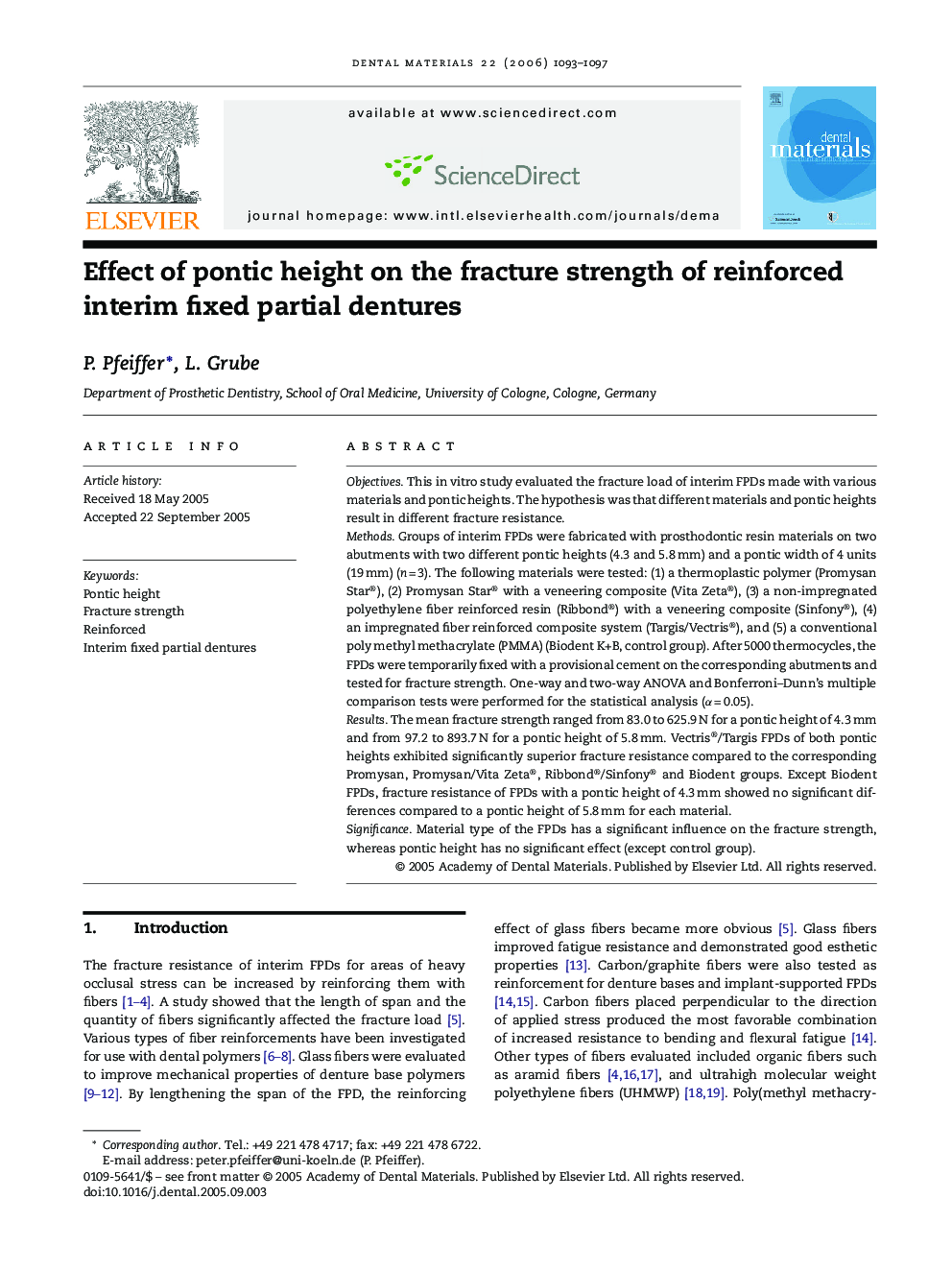| Article ID | Journal | Published Year | Pages | File Type |
|---|---|---|---|---|
| 1423432 | Dental Materials | 2006 | 5 Pages |
ObjectivesThis in vitro study evaluated the fracture load of interim FPDs made with various materials and pontic heights. The hypothesis was that different materials and pontic heights result in different fracture resistance.MethodsGroups of interim FPDs were fabricated with prosthodontic resin materials on two abutments with two different pontic heights (4.3 and 5.8 mm) and a pontic width of 4 units (19 mm) (n = 3). The following materials were tested: (1) a thermoplastic polymer (Promysan Star®), (2) Promysan Star® with a veneering composite (Vita Zeta®), (3) a non-impregnated polyethylene fiber reinforced resin (Ribbond®) with a veneering composite (Sinfony®), (4) an impregnated fiber reinforced composite system (Targis/Vectris®), and (5) a conventional poly methyl methacrylate (PMMA) (Biodent K+B, control group). After 5000 thermocycles, the FPDs were temporarily fixed with a provisional cement on the corresponding abutments and tested for fracture strength. One-way and two-way ANOVA and Bonferroni–Dunn's multiple comparison tests were performed for the statistical analysis (α = 0.05).ResultsThe mean fracture strength ranged from 83.0 to 625.9 N for a pontic height of 4.3 mm and from 97.2 to 893.7 N for a pontic height of 5.8 mm. Vectris®/Targis FPDs of both pontic heights exhibited significantly superior fracture resistance compared to the corresponding Promysan, Promysan/Vita Zeta®, Ribbond®/Sinfony® and Biodent groups. Except Biodent FPDs, fracture resistance of FPDs with a pontic height of 4.3 mm showed no significant differences compared to a pontic height of 5.8 mm for each material.SignificanceMaterial type of the FPDs has a significant influence on the fracture strength, whereas pontic height has no significant effect (except control group).
